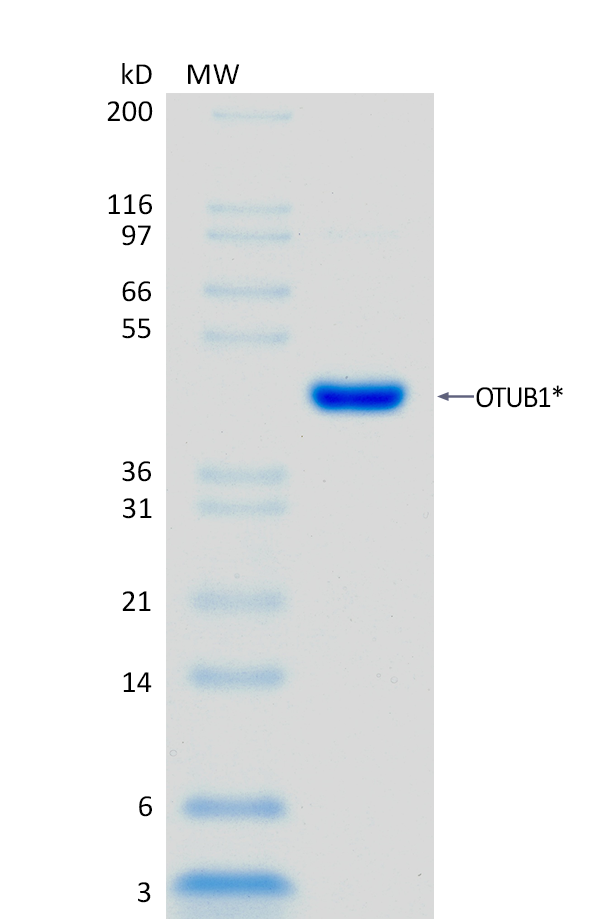Formulation: 40 mM HEPES, 100 mM NaCl, 10% Glycerol, 1 mM EDTA, 1 mM TCEP, pH 7.6
Shipping: The product is shipped with dry ice. Upon receipt, store it immediately at the temperature recommended below.
Storage and Stability: Use a manual defrost freezer and avoid repeated freeze-thaw cycles. Aliquot and store ≤ -70°C (stable for 24 months from date of receipt).
 2 μg OTUB1* run on 4-12% SDS-PAGE gel under reducing conditions
2 μg OTUB1* run on 4-12% SDS-PAGE gel under reducing conditions